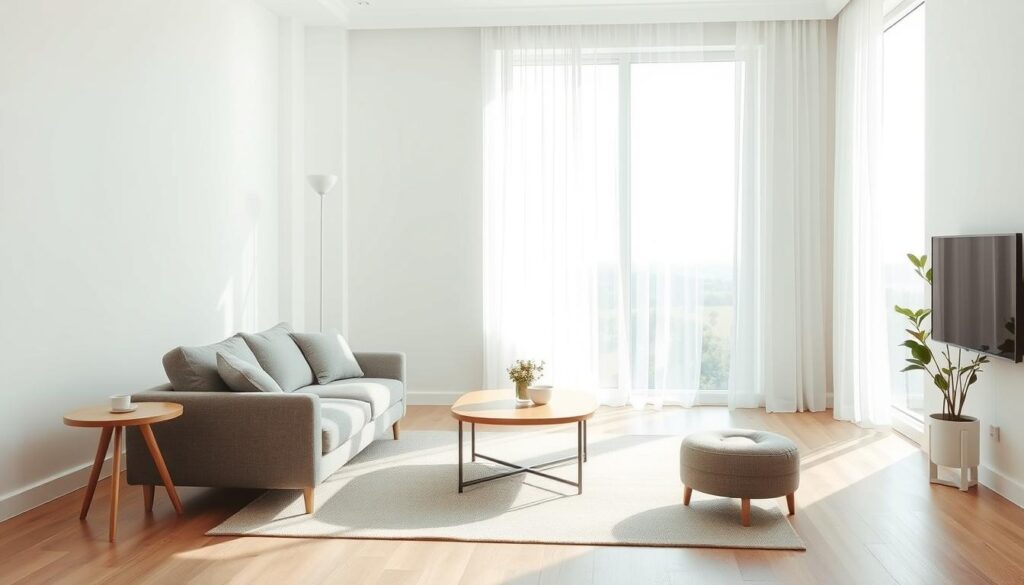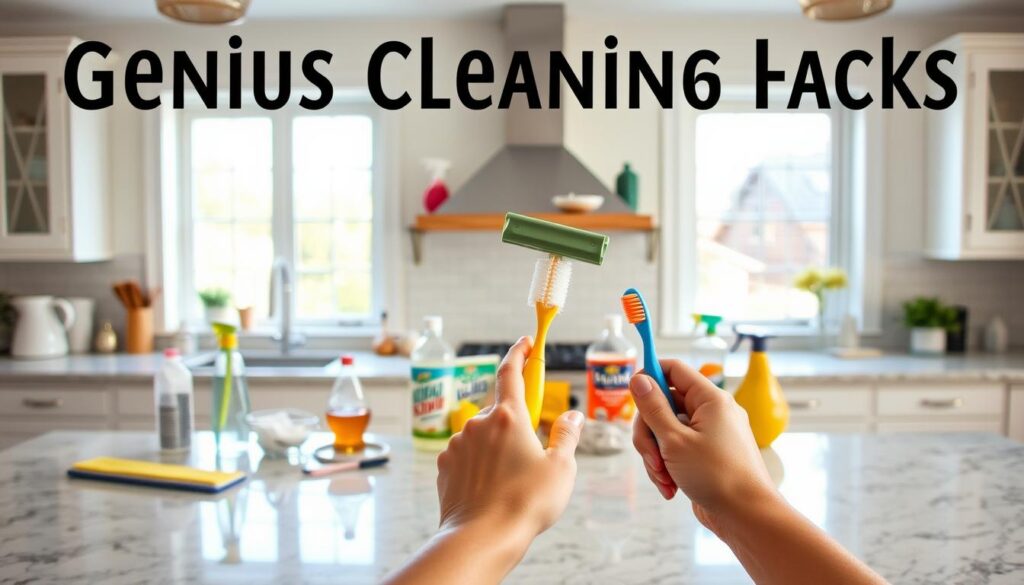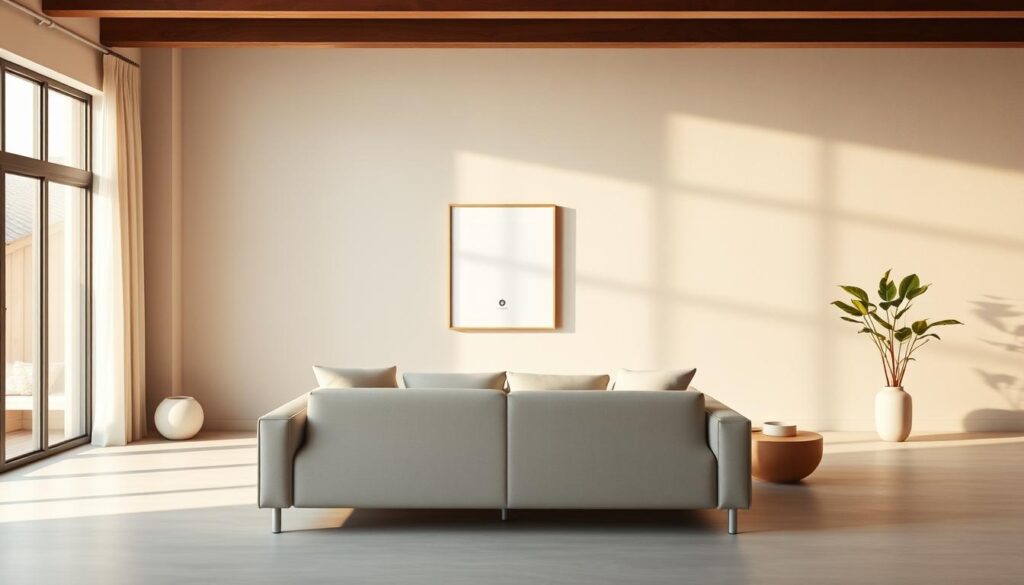Blog
The ‘One In, One Out’ Rule: The Easiest Way to Prevent Clutter Overload

Maintaining a clutter-free home can be a daunting task, but there’s a simple yet effective strategy to achieve it: the ‘One In, One Out’ rule. This straightforward approach involves removing an old item every time a new one is acquired, ensuring that clutter doesn’t build up.
By adopting this rule, individuals can be more mindful of their consumption habits and make intentional decisions about what to keep and what to discard. This decluttering strategy not only reduces stress but also increases productivity by creating a more organized living environment.
Key Takeaways
- Implementing the ‘One In, One Out’ rule helps maintain a clutter-free home.
- This rule promotes mindful consumption and intentional decision-making.
- A clutter-free environment can significantly reduce stress and increase productivity.
- Adopting this strategy leads to a more organized living space.
- It’s a simple and effective approach to decluttering.
Understanding the ‘One In, One Out’ Rule
To understand the ‘One In, One Out’ rule, it’s essential to grasp its implications on home organization. This rule is not just a practical decluttering strategy; it’s a mindset that encourages individuals to be more thoughtful about their possessions.
What the Rule Entails
The rule entails balancing the number of items in your home by removing an old item whenever a new one is acquired. For instance, if you buy a new shirt, you should donate or discard an old one to maintain equilibrium. This approach helps in maintaining a balanced and organized home, reducing the likelihood of clutter accumulation.
Origins and Philosophy Behind the Concept
The ‘One In, One Out’ rule has its roots in minimalist philosophy, which emphasizes simplicity and intentional living. As noted by minimalism advocates, “The goal is not to get rid of everything, but to keep only what adds value to your life.” This philosophy encourages individuals to be more mindful of their consumption habits and the value of their possessions.
“The goal is not to get rid of everything, but to keep only what adds value to your life.”
Why This Approach Works Long-Term
This approach works long-term because it cultivates habits that support a clutter-free lifestyle. By consistently applying the ‘One In, One Out’ rule, individuals can develop a more mindful approach to consumption. For more detailed guidance on implementing this rule, you can refer to resources like The Spruce, which offers practical tips on decluttering and organizing.
| Benefits | Description |
|---|---|
| Maintains Equilibrium | Ensures that the number of items in your home remains balanced. |
| Encourages Mindful Consumption | Prompts individuals to think carefully before acquiring new items. |
| Reduces Clutter | Helps in preventing clutter accumulation by removing old items. |
Why Clutter Accumulates in Modern Homes
The accumulation of clutter in contemporary homes is a complex issue influenced by multiple factors. Clutter is not just a matter of personal disorganization; it’s a symptom of deeper behavioral and systemic issues.
Consumerism and Impulse Buying
One of the primary drivers of clutter is consumerism. The ease of purchasing goods online and in-store, coupled with aggressive marketing strategies, encourages impulse buying. This behavior leads to acquiring items that are not necessarily needed, contributing to clutter.
Emotional Attachment to Possessions
Emotional attachment to possessions is another significant factor. People often keep items due to sentimental value or the fear of letting go of memories associated with those items. This emotional clutter can be challenging to address.
Lack of Organizational Systems
A lack of effective organizational systems exacerbates clutter accumulation. Without proper systems in place, it’s easy for clutter to build up. This includes both the physical space and the processes for managing belongings.
Storage Limitations
One aspect of organizational systems is storage. When storage solutions are inadequate or poorly designed, it can lead to clutter. Effective storage solutions are crucial for maintaining a clutter-free environment.
Ineffective Sorting Methods
Another critical aspect is the method of sorting and categorizing items. Ineffective or inconsistent sorting methods can result in clutter. Implementing a consistent and logical sorting system is key to clutter prevention.
Understanding these factors is the first step towards preventing clutter. By addressing consumerism, emotional attachment, and organizational shortcomings, individuals can take significant strides towards maintaining a clutter-free home.
Benefits of Implementing the ‘One In, One Out’ Decluttering System
Implementing the ‘One In, One Out’ rule is a simple yet powerful strategy for maintaining a balanced and clutter-free home. This approach not only helps in achieving a more organized living space but also offers numerous benefits that enhance overall well-being.
Maintaining Equilibrium in Your Space
The ‘One In, One Out’ rule ensures that for every new item brought into the home, an old one is removed, thus maintaining a consistent level of possessions. This equilibrium is key to preventing clutter buildup and keeping living spaces organized.
Financial Benefits and Mindful Consumption
By adopting this rule, individuals are encouraged to think more critically about their purchasing habits, leading to more mindful consumption. This, in turn, can result in significant financial savings as unnecessary purchases are avoided.

Reduced Cleaning and Maintenance Time
A clutter-free home requires less time and effort to clean and maintain. With fewer possessions, there’s less dust accumulation, and cleaning becomes a more manageable task, freeing up time for other activities.
Mental Health and Stress Reduction
Living in a clutter-free environment can have a positive impact on mental health. The reduction in clutter leads to a decrease in stress levels, as the visual stimuli that contribute to feelings of overwhelm are minimized.
Decreased Decision Fatigue
With fewer possessions to manage, decision fatigue is significantly reduced. This means less mental energy is spent on deciding what to wear, where to place items, or what to clean next, leading to a more streamlined daily routine.
Improved Focus and Productivity
A clutter-free and organized environment enhances focus and productivity. Without the distraction of clutter, individuals can concentrate more effectively on tasks, leading to improved performance in both personal and professional spheres.
By embracing the ‘One In, One Out’ decluttering system, individuals can enjoy a more organized, stress-free living environment that aligns with the principles of minimalism. This approach promotes a simpler and more intentional way of living, contributing to overall well-being.
Getting Started: Preparing for the ‘One In, One Out’ Method
To successfully implement the ‘One In, One Out’ method, you need to start with a comprehensive assessment of your home. This initial step is crucial in understanding the current state of your living space and identifying areas that require attention.
Initial Home Assessment
Conducting an initial home assessment involves evaluating each room to understand the scope of your belongings. This process helps in creating a clear picture of your possessions and their distribution across different areas of your home.
Room-by-Room Evaluation
A room-by-room evaluation is essential to identify clutter hotspots and understand the types of items that are accumulating. This detailed assessment will help you pinpoint specific areas that need decluttering.
Creating a Baseline Inventory
As part of your assessment, creating a baseline inventory of your possessions is vital. This inventory serves as a reference point for tracking changes and progress as you implement the ‘One In, One Out’ rule.
Identifying Problem Areas and Categories
During your assessment, it’s important to identify problem areas and categories where clutter tends to accumulate. This could include categories like clothing, books, or kitchen items.
Setting Personal Guidelines and Exceptions
To make the ‘One In, One Out’ method effective, it’s crucial to set personal guidelines and exceptions. This involves tailoring the rule to fit your specific needs and circumstances, making it more likely to succeed in the long term.
Step-by-Step Implementation Guide
The key to benefiting from the ‘One In, One Out’ rule lies in its thoughtful implementation. By following a structured approach, you can effectively manage your belongings and maintain a clutter-free home.
Creating an Inventory System
To start, it’s essential to have a clear understanding of what you own. Creating an inventory system helps you track your possessions and make informed decisions about what to keep and what to discard. Begin by categorizing your belongings into groups such as clothing, kitchen items, and electronics. Then, use a spreadsheet or a decluttering app to list the items in each category.
Establishing Decision Criteria for Items to Remove
When deciding what items to remove, consider the following criteria:
- When was the last time you used this item?
- Does it have sentimental value or serve a practical purpose?
- Is it in good condition or can it be repaired?
Being honest with yourself about these questions will help you make tough decisions.
Developing a Removal Process
Once you’ve identified items to remove, you need a plan for how to dispose of them. This involves considering different pathways for removal.
Donation Pathways
Items that are still in good condition can be donated to local charities, thrift stores, or online organizations. Donating not only declutters your home but also supports your community.
Selling Options
For items of value, consider selling them through online marketplaces, garage sales, or consignment shops. This can help offset the cost of new purchases.
Responsible Disposal
For items that are broken or cannot be donated, ensure they are disposed of responsibly. This might involve recycling electronic waste or properly disposing of hazardous materials.
Tracking Your Progress
To stay motivated and adjust your approach as needed, it’s crucial to track your progress. Keep a journal or use an app to monitor the items you’ve removed and the new ones you’ve acquired. Regularly reviewing your progress will help you stay on track and make adjustments to maintain a clutter-free home.
By following these steps and maintaining a commitment to the ‘One In, One Out’ rule, you can achieve a more organized and clutter-free living space.
Applying the Rule to Different Categories of Items
Applying the ‘One In, One Out’ rule to different categories of items is a straightforward way to maintain a balanced home. This rule can be tailored to fit various aspects of your life, ensuring that clutter is kept at bay across the board.
Clothing and Accessories
When it comes to clothing and accessories, the ‘One In, One Out’ rule can be particularly effective. For every new item you bring into your wardrobe, an old one must be removed. This helps maintain a balanced amount of clothing and prevents overcrowding in your closet.
For instance, if you buy a new shirt, you should consider donating or discarding an old one. This practice not only helps in maintaining a clutter-free closet but also encourages you to think more critically about your purchasing decisions.
Books and Media
For book lovers, applying the ‘One In, One Out’ rule can mean that for every new book you acquire, an old one must be given away or recycled. This rule can also be applied to DVDs, CDs, and digital media.
A helpful tip is to keep a “donate” box in your home where you can place items you’re willing to give away. Once the box is full, you can take it to your local charity or recycling center.
Kitchen Items and Appliances
In the kitchen, the ‘One In, One Out’ rule can help prevent clutter from gadgets and appliances. If you purchase a new kitchen gadget, consider removing or storing an old one.
| Item | Old Item to Remove | New Item |
|---|---|---|
| Kitchen Gadget | Old Blender | New Stand Mixer |
| Dinnerware | Chipped Plates | New Ceramic Plates |
Electronics and Gadgets
For electronics and gadgets, the rule remains the same: for every new device you bring home, an old one should be discarded or recycled. This helps keep your space organized and reduces electronic waste.
“The ‘One In, One Out’ rule is not just about getting rid of stuff; it’s about making room for what’s truly important.”
Children’s Toys and Items
Applying the ‘One In, One Out’ rule to children’s toys can help maintain a tidy play area and teach children about the value of letting go of old items when new ones are acquired.
It’s essential to involve children in this process, explaining why it’s necessary to remove old toys when new ones are brought home.
Seasonal and Holiday Decorations
For seasonal and holiday decorations, the rule can help prevent clutter from building up. Consider storing or donating old decorations when new ones are purchased.

By applying the ‘One In, One Out’ rule across different categories, you can cultivate a more minimalist lifestyle and significantly reduce clutter in your home.
Overcoming Common Challenges and Resistance
While the ‘One In, One Out’ philosophy is simple, its execution can be complicated by various factors, including sentimental items and family dynamics. As individuals embark on this decluttering journey, they may encounter several challenges that require thoughtful strategies to overcome.
Dealing with Sentimental Items
One of the most significant challenges is dealing with sentimental items. These possessions hold emotional value, making it difficult to decide what to keep and what to let go of. To overcome this, consider creating a memory box or album where you can store a few select sentimental items, rather than keeping them all.
Managing Gifts and Special Occasions
Gifts received during special occasions can also pose a challenge. To manage these items effectively, consider the giver’s intentions and the item’s usefulness or sentimental value. If it’s something you don’t need or can’t use, consider regifting or donating it.
Getting Family Members on Board
Getting all family members to cooperate with the ‘One In, One Out’ rule can be difficult. To overcome this, communicate the benefits of this approach to your family, and involve them in the decision-making process. Make it a family effort to maintain a clutter-free home.
Handling Bulk Purchases and Necessities
Bulk purchases and necessities can also test the ‘One In, One Out’ rule. To handle these situations, consider the long-term value of the item and whether it will truly be used. If it’s something you need, find an item to remove for every new item you bring in.
Adapting the Rule for Shared Living Spaces
Adapting the ‘One In, One Out’ rule for shared living spaces requires cooperation and agreement among all household members. Establish clear guidelines and communicate regularly to maintain a clutter-free environment that works for everyone.
By understanding these challenges and developing strategies to overcome them, individuals can more successfully integrate the ‘One In, One Out’ rule into their daily lives, achieving a clutter-free home and a more organized lifestyle.
Measuring Success and Maintaining Motivation in Your Decluttering Journey
The key to successful decluttering lies in measuring progress and staying motivated through the journey. As you implement the ‘One In, One Out’ rule, it’s essential to have strategies in place to maintain your momentum and ensure long-term success in home organization.
Setting Achievable Milestones
To stay on track, set achievable milestones that are realistic and measurable. Break down larger goals into smaller tasks to maintain a sense of accomplishment and progress. For instance, focus on decluttering one area or category of items at a time.
Celebrating Progress and Wins
Celebrating your progress is crucial for maintaining motivation. Acknowledge your achievements, no matter how small they may seem. This positive reinforcement will help you stay committed to your decluttering journey and foster a more minimalist lifestyle.
Adjusting Your Approach When Needed
Be flexible and willing to adjust your approach as needed. If you find that certain strategies are not working, don’t hesitate to try new methods. This adaptability is key to overcoming challenges and maintaining a clutter-free home.
Building New Habits Around Acquisitions
To sustain your decluttering efforts, it’s vital to build new habits around acquisitions. This includes implementing pre-purchase evaluation questions to assess the necessity of new items and practicing delayed gratification techniques to reduce impulse buying.
Pre-Purchase Evaluation Questions
Before buying something new, ask yourself:
- Do I really need this item?
- Will it add value to my life?
- Where will I store it?
These questions can help you make more mindful purchasing decisions.
Delayed Gratification Techniques
Practicing delayed gratification can significantly reduce impulse purchases. Wait 24 hours before buying non-essential items to determine if the purchase is still necessary. This simple technique can help you maintain a more organized and clutter-free home.
Conclusion: Maintaining a Clutter-Free Life with the ‘One In, One Out’ Philosophy
Embracing the ‘One In, One Out’ philosophy is a straightforward yet effective way to maintain a clutter-free home. By adopting this simple rule, individuals can cultivate habits that support a more organized, minimalist lifestyle. The key to long-term success lies in consistency and flexibility, being open to adjusting the approach as needed while continuing to embrace the principles of mindful consumption and intentional living.
As you continue on your tidying journey, remember that decluttering is not a one-time task, but rather an ongoing process. By incorporating the ‘One In, One Out’ rule into your daily life, you’ll be better equipped to manage clutter and maintain a sense of calm and clarity in your living space.
By making this philosophy a part of your lifestyle, you’ll not only enjoy the benefits of a more organized home but also develop a more thoughtful approach to consumption, ultimately leading to a more balanced and clutter-free life.


